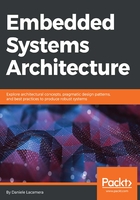
Hardware tools
If there is a tool that is absolutely indispensable to assist embedded software developers, it is the logic analyzer. By scoping the input and output signals involving the microcontroller, it is possible to detect the electrical behavior of the signals, their timing, and even the digital encoding of the single bits in the interface protocols. Most logic analyzers are able to identify and decode sequences of symbols by sensing the voltage of the wires, which is often the most effective way to verify that protocols are correctly implemented and compliant with the contracts to communicate with peripherals and network endpoints. While historically available only as standalone dedicated computers, a logic analyzer is often available in other forms, such as electronic instruments that can be connected to the host machine using USB or Ethernet interfaces, and use PC-based software to capture and decode the signals. The result of this process is a complete discrete analysis of the signals involved, which are sampled at a constant rate and then visualized on a screen.
While a similar task can be performed by oscilloscopes, they are often more complex to configure than logic analyzers when dealing with discrete signals. Nevertheless, an oscilloscope is the best tool for the analysis of analog signals, such as analog audio and communication among radio transceivers. Depending on the task, it might be better to use one or the other, but in general, the biggest advantage of a logic analyzer is that it provides better insight for discrete signals. Mixed-signal logic analyzers are often a good compromise between the flexibility of an oscilloscope, with the simplicity and the insights of a discrete signal-logic analysis.
Oscilloscopes and logic analyzers are often used to capture the activity of signals in a specific time window, which might be challenging to synchronize with the running software. Instead of capturing those signals continuously, the beginning of the capture can be synchronized with a physical event, such as a digital signal changing its value for the first time, or an analog signal crossing a predefined threshold. This is done by configuring the instrument to initiate the capture using a trigger, which guarantees that the information being captured only contains a time slice that is interesting for the ongoing diagnostic.